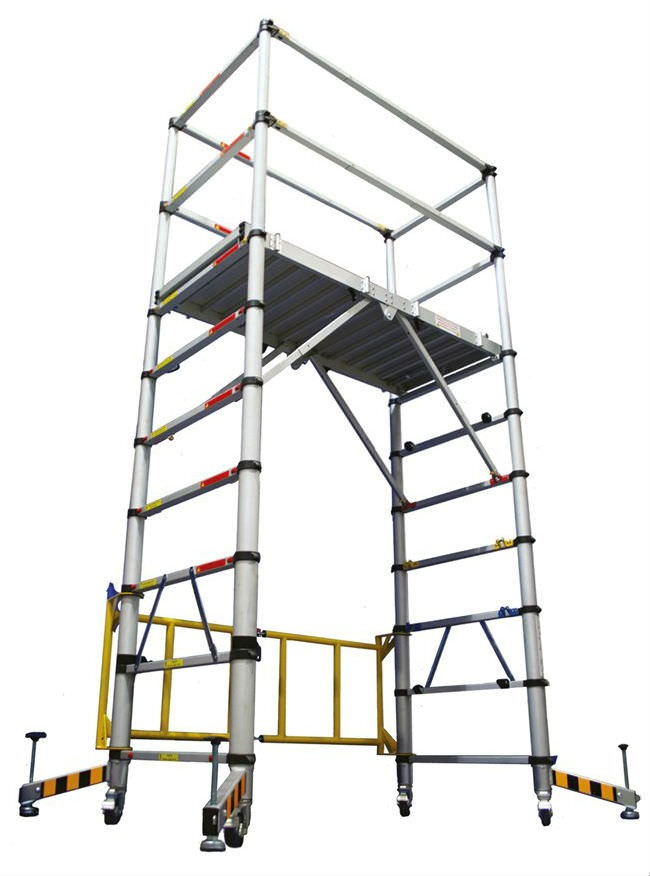Navigating Scaffolding Costs: Budgeting for Your Project
Advanced Scaffolding Technologies: Improving Building Operations ================================================================
Advanced scaffolding innovations are transforming building process, incorporating robotics, IoT sensing units, AI safety measures, electronic project management, and 3D printing. Automation with innovative sensors optimizes handling, decreasing errors and improving safety. IoT sensing units keep an eye on structural integrity and employee activities for real-time data evaluation. AI systems predict dangers and track dangerous actions, elevating security requirements. Digital platforms supply real-time job information accessibility and streamlined partnership for boosted performance. 3D printing includes customization and lowers product waste. This cutting-edge strategy warranties reliable, risk-free, and enhanced building and construction procedures. Check out further for comprehensive understandings on these sophisticated innovations.

Automation in Scaffolding Equipments
In contemporary construction methods, automation plays a vital role in boosting the efficiency and safety and security of scaffolding systems. Robot support has changed the method scaffolding is erected, adjusted, and taken apart on building websites. https://balhamscaffolding.co.uk These robots are outfitted with innovative sensing units and actuators that enable them to take care of hefty parts with accuracy, lowering the danger of human errors and accidents. By utilizing robot assistance, construction business can improve the scaffolding procedure, conserving time and labor expenses.
Additionally, data analytics have come to be important in enhancing scaffolding systems. By gathering and assessing data on variables like tons capacity, weather conditions, and employee movements, building and construction supervisors can make enlightened choices to boost scaffolding safety and efficiency. This data-driven approach enables real-time tracking of scaffolding structures, identifying possible issues prior to they escalate. By incorporating information analytics into scaffolding systems, building and construction companies can improve efficiency while making certain the safety and security of workers on-site. The combination of robotic assistance and data analytics notes a considerable improvement in the building industry's strategy to scaffolding systems.

Assimilation of IoT in Building
With the development of innovative scaffolding technologies, the construction market is experiencing a seamless combination of IoT in enhancing overall task effectiveness and safety. IoT sensing units play a crucial role in modern building jobs by supplying real-time data on different aspects of the job website. These sensors can be installed in scaffolding systems to keep an eye on elements such as structural stability, ecological conditions, and worker activities. By accumulating and examining data from IoT sensing units, project supervisors can make educated decisions, optimize operations, and assurance conformity with safety regulations.
Remote monitoring is an additional vital feature made it possible for by IoT in building. With linked gadgets and cloud-based platforms, stakeholders can from another location access data from IoT sensing units installed on scaffolding systems. This capacity permits proactive upkeep, prompt issue resolution, and improved interaction among staff member. Remote tracking not just boosts performance however likewise improves safety and security by enabling quick feedbacks to potential risks or breakdowns.
Enhancing Security With AI
Innovations in artificial intelligence are reinventing safety measures within the building and construction market. AI-driven surveillance systems are now being applied on building websites to improve safety and security procedures. These systems make use of anticipating understandings to examine huge amounts of information in real-time, enabling them to determine possible dangers prior to they take place.
AI-driven monitoring systems can track the motions of workers and tools, discovering discrepancies from safe techniques. By continuously keeping track of the construction website, these systems can offer immediate alerts to managers if any type of harmful behavior is identified. This aggressive technique to security permits immediate treatment, stopping mishaps before they occur.
In addition, AI can evaluate historical information to forecast prospective security risks based upon certain project conditions. By leveraging this predictive ability, building and construction business can execute targeted precaution to mitigate dangers effectively. Generally, the assimilation of AI in safety surveillance is considerably improving safety requirements in the construction industry, inevitably bring about a more secure workplace for all entailed.
Digital Platforms for Task Administration
Using innovative digital systems has actually become vital for effective project administration in the modern-day building industry. Cloud-based collaboration tools supply real-time accessibility to job information, making it possible for seamless communication and partnership among team members, regardless of their physical place. These platforms allow for the central storage of project records, illustrations, and timetables, ensuring that all stakeholders are working from one of the most updated information.
Mobile application remedies additionally improve task administration by enabling on-the-go access to vital job information. Job managers can track progression, connect with team members, and make notified decisions from anywhere, at any moment. The comfort and adaptability offered by mobile apps add to boosted productivity and structured process on construction websites.
Including electronic systems for job management not only raises efficiency yet additionally boosts transparency and responsibility throughout the job lifecycle. By leveraging cloud-based cooperation and mobile application remedies, construction business can optimize their operations and supply projects more effectively.
3D Printing for Personalized Frameworks
The integration of 3D printing modern technology in the building and construction market is revolutionizing the production of personalized frameworks. Additive production, as 3D printing is also known, offers unmatched flexibility in design and building and construction processes, permitting complex and customized building aspects that were formerly difficult or impossible to accomplish. Customized designs that as soon as called for complex mold and mildews or hands-on workmanship can currently be effectively made through 3D printing innovations.
Among the key benefits of using 3D printing for customized structures is the capacity to improve the manufacturing of one-of-a-kind components. By directly equating digital designs into physical things, additive production minimizes product waste and labor prices related to standard production approaches. This technology allows architects and designers to press the borders of style, producing structures that are not just visually striking yet also optimized for efficiency and capability.
As the building and construction market continues to accept innovative modern technologies, 3D printing is positioned to play a considerable role fit the future of design and structure construction.
Often Asked Concerns
Just How Do Advanced Scaffolding Technologies Influence the Total Price of Building Projects?
Advanced scaffolding modern technologies can substantially influence the overall price of building and construction projects by improving expense effectiveness through improved productivity. By utilizing advanced systems, jobs can be finished much more efficiently, lowering labor prices and general costs.

What Are the Potential Difficulties or Limitations of Integrating Iot in Construction Workflows?
Integrating IoT in building process supplies chances for efficiency and data-driven decision-making. However, obstacles such as cybersecurity threats, compatibility issues, and the requirement for specialized training may prevent seamless integration and adoption in the industry.
Can Ai-Enhanced Precaution in Scaffolding Systems Completely Eliminate the Risk of Mishaps on Building And Construction Websites?
AI driven precaution in scaffolding systems can significantly reduce the risk of crashes on building websites by supplying real-time surveillance and signals. While not completely eliminating risks, these innovative technologies improve workflow efficiency, guarantee much safer environments, and potentially cause cost savings.
Exactly How Do Digital Operating Systems for Job Administration Improve Communication and Partnership Amongst Construction Teams?
Digital systems for task administration boost communication and cooperation among building and construction teams by facilitating remote surveillance and real-time monitoring of progression. This causes enhanced effectiveness and structured processes, making certain smooth control and prompt job conclusion.
Exist Any Type Of Ecological Advantages Related To Using 3D Printing for Personalized Frameworks in Building And Construction Tasks?
Including 3D printing for personalized structures in building tasks uses ecological sustainability via minimized material waste and energy consumption. Additionally, it boosts price effectiveness by maximizing resource use and reducing transport requirements, making it an appealing solution for sustainable building practices.
Verdict
To summarize, the progression of scaffolding innovations has greatly improved building process. Automation, integration of IoT, safety and security improvements via AI, digital systems for job management, and 3D printing for tailored frameworks have transformed the building sector.
These modern technologies have actually improved effectiveness, precision, and security in construction tasks. Embracing these improvements will maintain driving innovation and improving processes in the building market.